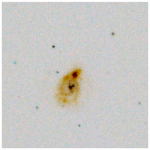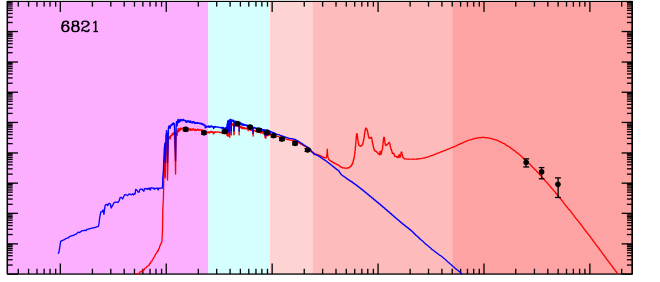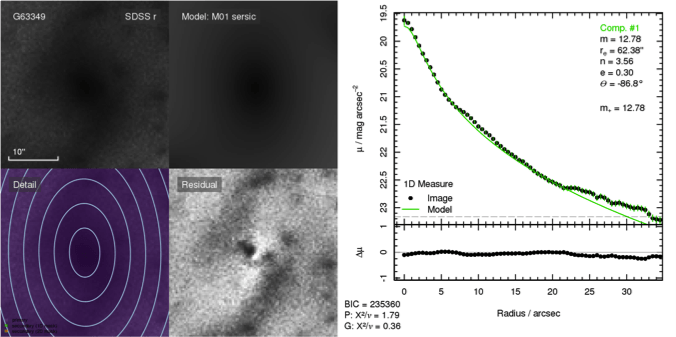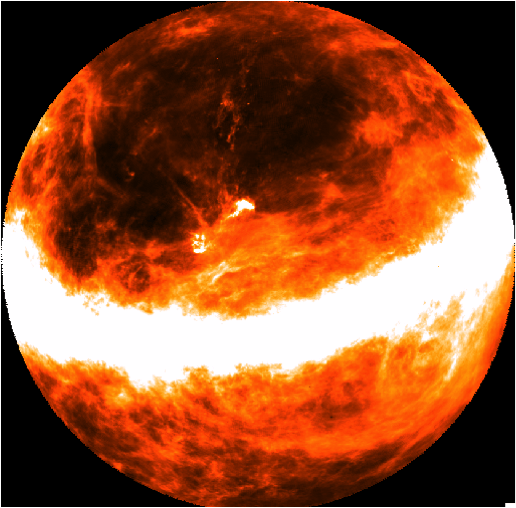Day 1: Monday 17th June 2013
I started the day at 9:00am, arrived at ICRAR-UWA and was shown around the building. At 9:30, I was left to do a bit of research about the SKA and ICRAR, and found out some quite interesting facts about the sheer scale of the SKA project, and some of the areas of astronomy research it will be used to get a better understanding of. I also found a lot about the work ICRAR does to help, and other projects it is involved in.
At 10:00am I was sent to the ground floor, to help out Alex Beckley in ICT, and was given the task of helping to find any issues in a prototype form of a website, and to point them out to him so that he may fix them. I found a total of three, all of which he was able to fix. Then at 11:30 I went back to the ground floor (I was doing the work at the desk I have been given for the next three days on the second floor) for half an hour to find out more about how the bug-fixes were done and how the website was constructed and the servers hosted. Following this I had lunch.
At 1:00pm, having finished lunch, I went back down to ground floor to meet Kevin Vinsen, who gave me a presentation about the SKA, and how it will work and be constructed as well as the issues that are being faced as they try to process the data from the telescopes. He also explained how astronomers process all the data they receive from telescopes. Along with much more information I would struggle to include in this short summary. Although topics included supercomputers, sharing of processing power of people’s personal computers through the internet for large data, and how radio telescopes work in a moderate amount of detail.
Day 2: Tuesday 18th June

A ‘Train Wreck’ merge of two galaxies. Found in images from the GAMA survey. Image from Dr Aaron Robotham.
Started the day at 9:00am again, at ICRAR-UWA. I was given the task of looking for recent science news and accompanying images to go on the “Science is Amazing” Facebook page. Finished this at 10:00am.
At 10:00am I went down to the first floor, where I talked with Dr Aaron Robotham, who explained to me what I was going to be doing for the next two hours. I was to search through 1320 images of merging galaxies, and to find the so called “train wreck” merges, and to put the label of each of the images containing one onto a text document. This occupied my time until 12:00pm, when once again I had lunch until 1:00pm.
After lunch, at 1:00pm, I went down to the second floor again, where I spent the next two hours talking about models for representing the formation of galaxies, dark matter, and black holes with Chris Power. I learnt heaps. He explained to me some of the changes they have had to make to some models to make them not produce different results to others from the same test, as well as how some theories are explain things but leave others unanswered, and others contradict but explain the others.
I just finished listing the “train wreck” merges. Enjoying this so much, it’s really fascinating.
Day 3: Wednesday 19th June
Started today at 9:00am yet again, last day at ICRAR-UWA, tomorrow I move on to ICRAR-Curtin for two days. Began immediately with a researcher session, this time with Professor Simon Driver, who is currently working on the GAMA survey, which he explained briefly the purposes of to me. It is the same project I was searching through images for Dr Aaron Robotham yesterday, here is a link to the website: http://www.gama-survey.org/, followed by an explanation of some of the theories surrounding galaxy formation by different methods to form different kinds of galaxies. He then explained how diagrams representing data they had received worked, and then set me the task of searching for diagrams that had failed to show proper results, and to search for incorrect models of the formation of galaxies amongst hundreds of results.
Had lunch at 12:00pm again today, however I continued sorting through the images and writing down the IDs of those I was supposed to throughout this break. At 1:30-1:45pm I finished this, and went on with “Galaxy Explorers”, a computer based exercise showing the Milky Way and its nearby galaxies and dust clouds
Tomorrow I am at ICRAR-Curtin.
Day 4: Thursday 20th June
Today I started at ICRAR-Curtin at 9:00, and set up the computer and began the day by looking through blogs detailing the construction of the MWA (Murchison Widefield Array).At 10:00 I went to an office quite close to where I am set up. There I spent the next two hours talking with Dr Andrew Walsh, who studies star formation and masers in our own galaxy. We spoke about much of what he does, and he showed me a number of brief power-points, or parts of them anyway relevant to what he has been looking at recently, and showed me a survey he had conducted of the sky, and his findings about star formation in relation to density of gas, using the number of water masers in particular parts of the galactic plane comparing to ammonia gas density, and explained a few of the questions that they found with this survey. He also explained to me much about how large and normal mass stars form differently (of course starting with how a normal mass star forms). This was all very interesting. He also told me a bit about the sorts of paths into astronomy. At 12:00 I had lunch until 1:00pm.
At 1:00 I went to the office of Dr Peter Curran, whose work currently is about black holes and x-ray binaries. He showed me a power point briefly explaining what an x-ray binary is and how a black hole or neutron star draws mass of either normal or large mass stars. He explained the various things you can see through each spectrum, how the accretion disk of a neutron star or black hole is visible through the x-ray telescopes, as it mainly emits x-rays, whereas the jet, which is matter ejected from the top and bottom of the neutron star or black hole, is visible largely in the radio spectrum. He used to study gamma ray burts, and so he also told m heaps about them. He then gave me a source on a computer and a few databases to search for the source, and then to find which of many objects visible in the new source was not existant or visible in an older version of the same plane in the optical spectrum. I finished at 3:00 today.
Day 5: Friday 21st June 2013
Today I started at 9:00 at ICRAR-Curtin, and one of the teachers from school was here to check on how I was going. He left after about 10 minutes, at which point I went to my first researcher session of the day with Dr James Miller-Jones. He also studies black holes and x-ray binaries. He explained to me heaps of ideas, including the ways they can calculate the velocity of a black hole, and therefore trace a general idea of the path is has followed over a certain time period, with a certain level of uncertainty, as well as how this can help identify how the black hole has formed. He also explained how to work out the orbital radius of a binary system of a star and a black hole, although I think the concept applies to binary systems In general. We also talked about the results of a star in an x-ray binary, or a star and a black hole orbiting each other colliding. He also told me about some of the ideas surrounding gravitational waves and how they will try to use the SKA to find evidence of these by using millisecond pulsars to judge any noticeable time change in the receiving of the light from the pulsars that may indicate a gravitational wave passing through the earth. I had lunch from 12:00pm to 1:00pm.
From 1:00pm I was with Dave Pallot, a programmer, who explained some stuff to do with the set up of the MWA, some more information as to the data, as well as what he does for work. And what kind of programming language they use for different situations. He then taught me some basic C coding, resulting in coding for a basic program to find the area of a circle given the radius.
Overall, this work experience has been really fun, educational, and a great experience of what an astronomer does. This has been the Bunney ICRAR Work Experience Blog, and this is me, Lachlan Bunney signing off for the last time at 3:36pm on Friday 21st June 2013.



